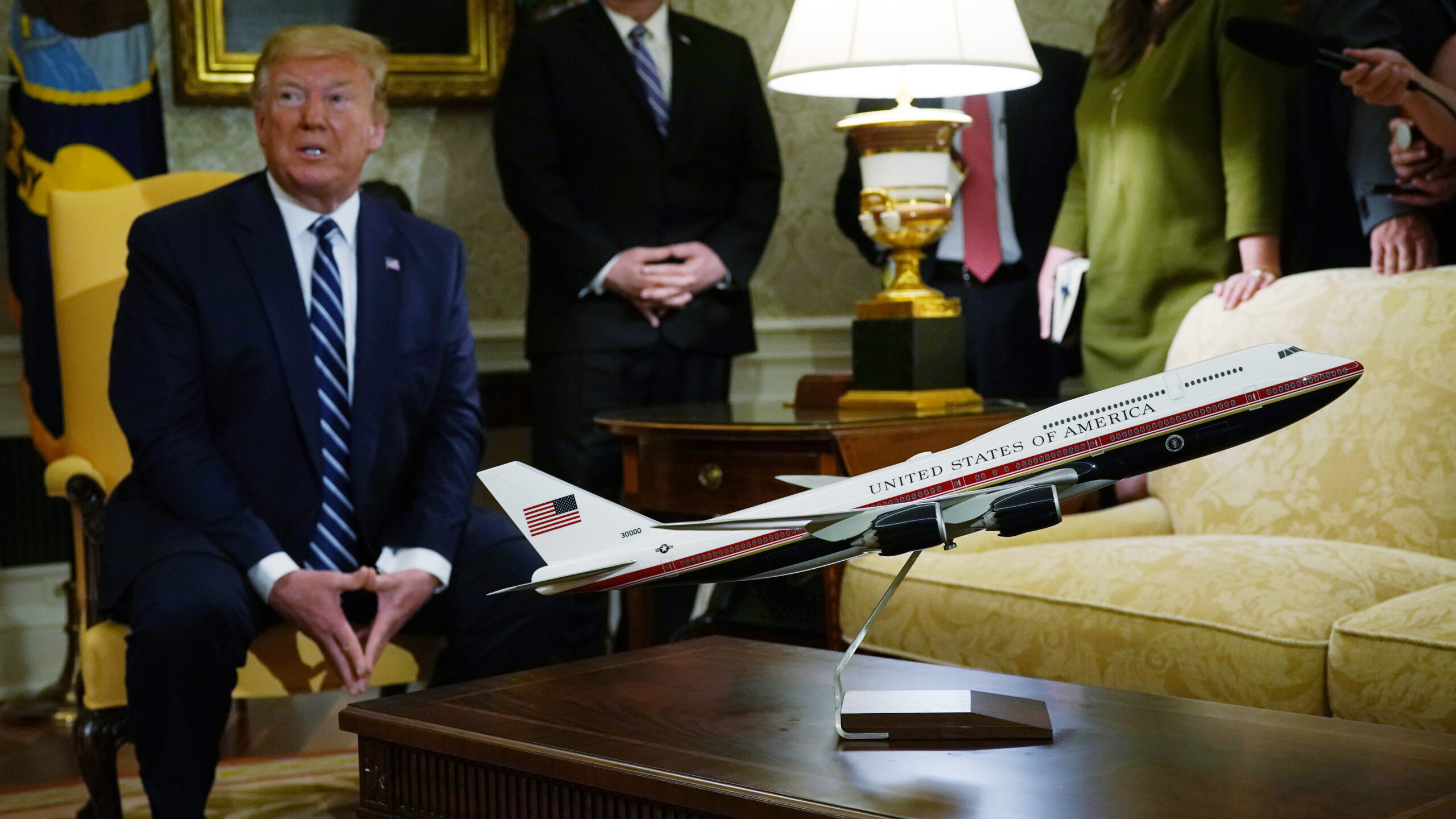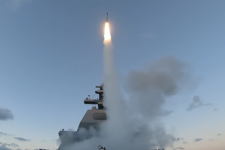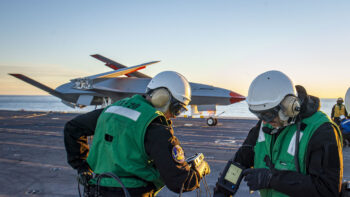
A model of the proposed paint scheme of the next generation of Air Force One is on display during a meeting between U.S. President Donald Trump and Canadian Prime Minister Justin Trudeau in the Oval Office of the White House June 20, 2019 in Washington, DC. (Alex Wong/Getty Images)
WASHINGTON: The delivery of the first new VC-25B presidential transport aircraft — better known by the callsign “Air Force One” — could occur up to three years late, the Air Force’s top acquisition official said today.
“We are anticipating at this point a delay to the previously approved program schedule on the order of 24 to 36 months — so two to three years, which is obviously quite a significant delay,” Andrew Hunter, the Air Force’s assistant secretary for acquisition, technology and logistics, said during a House Armed Services seapower and projection forces subcommittee hearing.
“That means that we will have to sustain the existing aircraft for longer, and we are posturing to do that,” he said, adding that the Air Force will have to budget additional money in fiscal 2024 to bridge the gap until the new VC-25B can come online.
The major driver of the delay is the bankruptcy of GDC Technics, Boeing’s original subcontractor for the VC-25B’s interiors, and the hiring of a new interior supplier, Hunter said. Those troubles “significantly pushed the schedule back,” and while this problem has been known for some time, Hunter added that it has taken some time to understand the full impact to the schedule.
In summer 2021, the Air Force first disclosed that it was facing a yearlong delay to the first delivery of the VC-25B, which was originally scheduled for 2024.
In March, Breaking Defense first reported that Boeing was estimating a 17-month delay, although the Air Force still had not accepted the company’s proposed schedule. In April, after a story in The Wall Street Journal disclosed production problems that risked damaging the jets, the Air Force acknowledged a delay of at least 24 months.
Due to the fixed-price contract agreed to by Boeing and the Air Force in 2018, Boeing is responsible for paying for all costs exceeding $3.9 billion related to the engineering and production of the two new VC-25Bs. So far, the company has logged $1.1 billion in charges — more than a quarter of its contract value.
The engineering, manufacturing and development (EMD) contract covers the cost of turning baseline Boeing 747s into a presidential aircraft furnished with exquisite (and highly-classified) defensive systems, hardened electronics and secure communications gear. When including all costs associated with the next-generation Air Force One plane, including new hangars, the cost of the program could be as much as $5.3 billion, according to Defense One.
Boeing CEO Dave Calhoun told investors last month that the EMD contract, which was brokered by President Donald Trump and former Boeing CEO Dennis Muilenburg, was a mistake.
“Air Force One, I’m just going to call a very unique moment, a very unique negotiation, a very unique set of risks that Boeing probably shouldn’t have taken,” he said during an earning call. “But we are where we are, and we’re going to deliver great airplanes. And we’re going to recognize the costs associated with it.”
Lockheed wins competition to build next-gen interceptor
The Missile Defense Agency recently accelerated plans to pick a winning vendor, a decision previously planned for next year.


























